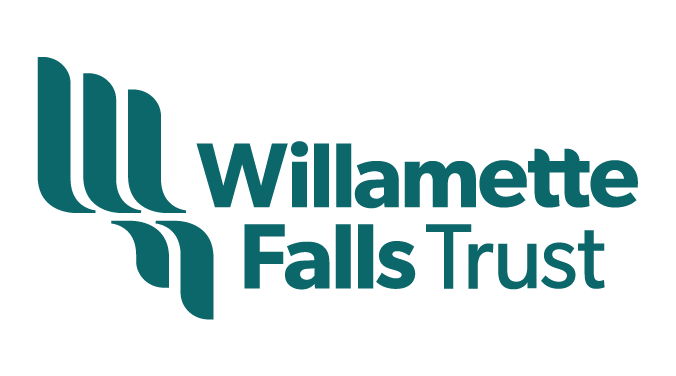Willamette Falls Inter-Tribal Public Access Project
FACT SHEET
Willamette Falls Trust is a nonprofit, inter-Tribal organization redefining how Indigenous communities work with private and government partners to preserve, restore, and advocate for sacred sites with shared histories.
Quick facts about Willamette Falls
Natural wonder: Willamette Falls is the second largest waterfall (by volume) in the United States, after Niagara Falls.
Size: Willamette Falls spans 1,600 feet across the river and rises 42 feet high.
Geology: A horseshoe-shaped waterfall.
History: Since time immemorial, Willamette Falls has been a gathering place for Native tribes from throughout the area. In addition to first food harvesting of local plants and animals, the River provides access to Chinook, Coho, and Steelhead salmon along with K'suyas asum also known as Pacific lamprey.
Industry: From Oregon’s earliest European settlements, the effort to harness the power of the Willamette Falls for industrial purposes has played a role in the development of regional and state economies. Various pulp, paper, and flour mills have operated here, as well as the T. W. Sullivan Hydroelectric Plant which became operational in 1889 and continues today to supply power to Oregonian’s.
First long-distance transmission of electricity: Willamette Falls is the site of the first long-distance transmission of electricity, produced on June 3, 1889.
Viewpoints: Restricted access to area affords only a distant viewpoint along the interstate from which to view the Falls. Our project addresses this, allowing for a uniquely different perspective from the West Linn side, as well as the opportunity for enhanced visitor experience.
Quick facts about the Willamette Falls Trust
Mission: Established in 2015, Willamette Falls Trust’s mission is to champion and sustain an exceptional Willamette Falls experience that offers year-round connection to the grandeur of the Falls, historic and cultural interpretation, healthy habitat, public open spaces, and elevates Tribal voices and interests in the Falls and its waterway.
Collaborative Leadership: Willamette Falls Trust is led by its four Member Tribes, each with appointed representatives: Confederated Tribes and Bands of the Yakama Nation, Confederated Tribes of Siletz Indians, Confederated Tribes of the Umatilla Indian Reservation, and Confederated Tribes of Warm Springs Reservation of Oregon, collaboratively representing an estimated 25,000 Tribal citizens.
Relationships: We are in regular conversation with respected public and private organizations, including the City of West Linn, Metro, Portland General Electric, and MASS Design Group.
Fundraising: The Trust is working with public and private partners to raise funds needed to create meaningful public access to the Falls. To date, the Trust has raised over $15 million in contributions and pledges, and $32 million in public funding has been earmarked for a public access project at the Falls.
Nationally recognized: In February 2023, Willamette Falls Trust was accepted into the High Line Network, a nationwide community of non-profit leaders redefining public spaces.
Quick Facts About What the PGE and Willamette Falls Trust Agreement Does
Reaffirms PGE’s recognition of the area’s immense importance to Northwest Tribes and intent to grant a permanent easement that gives Tribal nations safe access for traditional cultural practices at the Falls in a manner that allows PGE to continue to operate its Sullivan hydroelectric facility.
Affirms the importance of the continued operation of PGE’s emissions-free Sullivan hydroelectric facility at Willamette Falls and the associated fish passage benefits, including PGE’s intent to relicense this facility in 2035.

